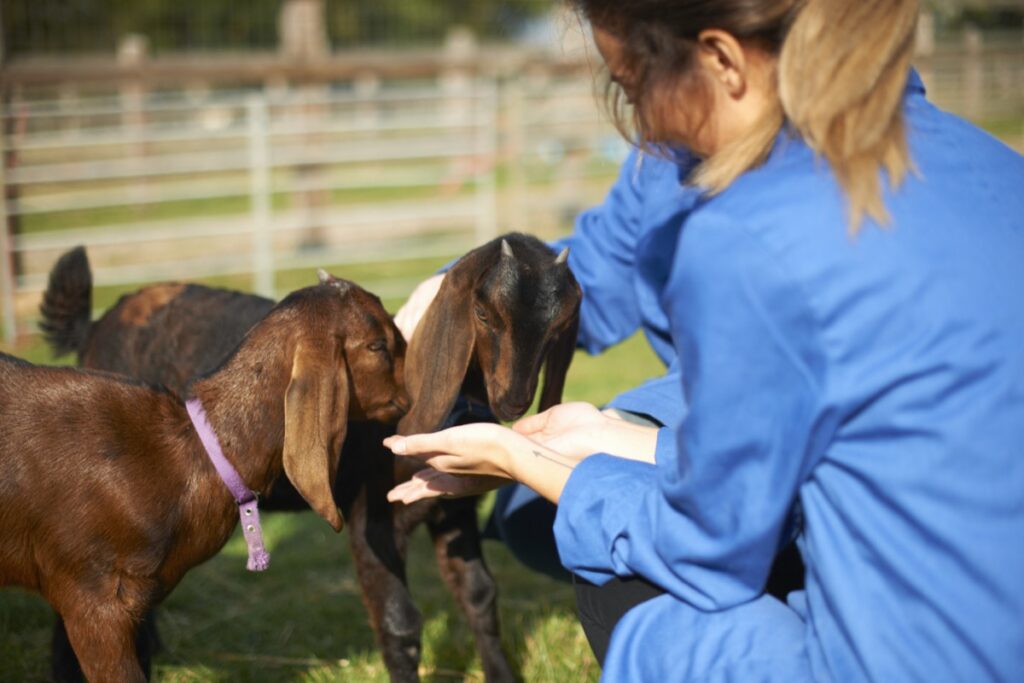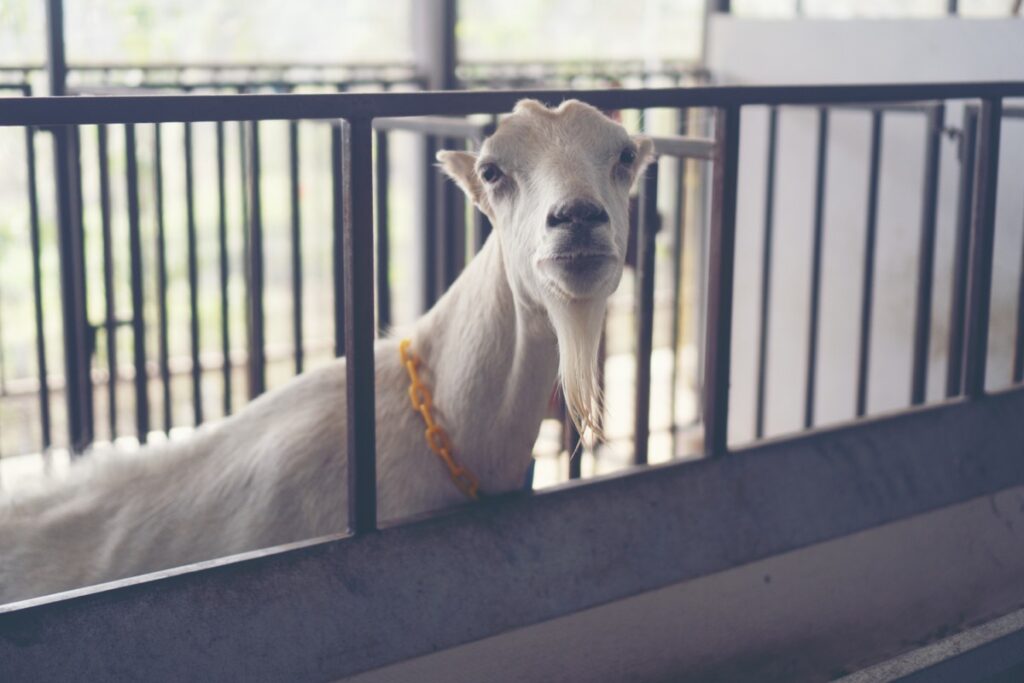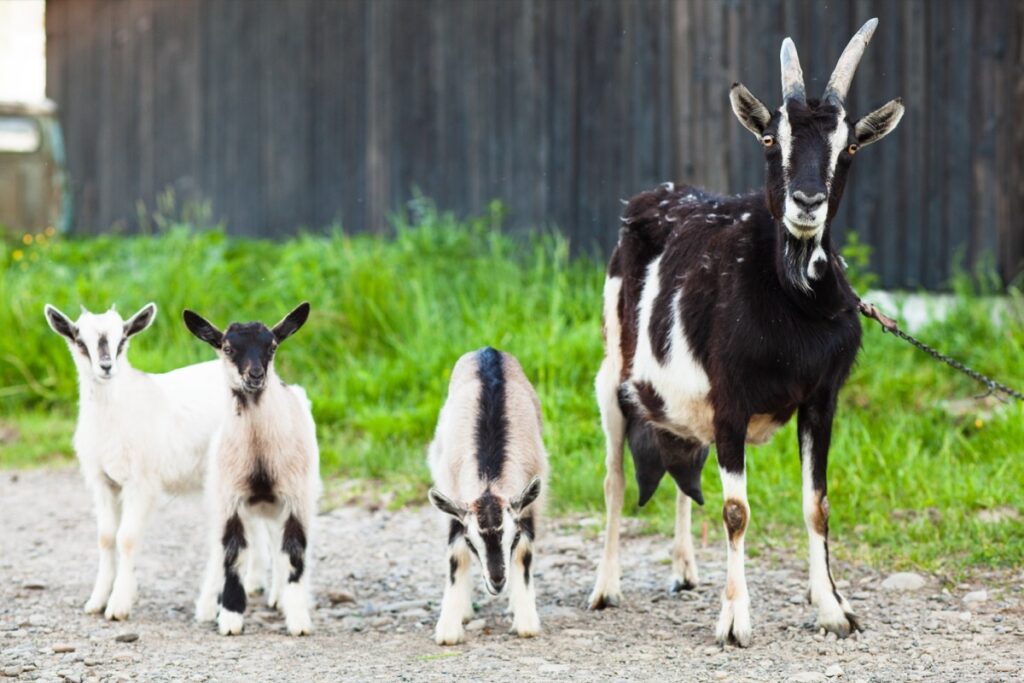Before going into details of creating a profitable goat farming business, it is critical first to understand the fundamentals of goats. Goats are ruminant animals that can thrive in various climates and are raised for multiple purposes, such as meat, milk, and fiber production. They are prevalent in countries such as India, Nigeria, Pakistan, Bangladesh, and Malawi. Goat farming is recommended in areas with a high population of goats, as it can be a lucrative business venture for farmers.

Organic Urban Goat Farming
What is Organic Urban Goat Farming?
Organic Urban Goat Farming is a sustainable practice that involves raising goats in an urban setting using natural and organic farming methods. This type of farming is becoming increasingly popular as more people are interested. In organic urban goat farming, goats are raised without chemicals, antibiotics, or growth hormones. They are given access to clean pasture and fresh water and a nutritious diet of organic feed and forage.
Common Terms in Urban Goat Farming
- Buck: An adult or mature male goat
- Doe: An adult or mature female goat
- Buckling: A young male goat
- Goatling: A young female goat
- Kid: A newly-born goat
- Suckling: A female goat that is nursing a kid
- Kidding: The act of giving birth
- Gestation period: The length of time a female goat is pregnant, typically lasting 148-156 days.
The Importance and Benefits of Organic Urban Goat Farming
- Provides a source of animal protein: Goats can produce milk and meat, important animal protein sources for low-income farmers and their families.
- Low investment and high returns: Goat farming is a good way for farmers to utilize farmlands. Goats are cheap to purchase and have a fast reproductive rate, allowing for quick investment returns.
- Diverse cultural acceptance: Goats are a viable option for more farmers than cattle or other large livestock because women and youth can own and handle them without limitations of culture.
- Wide climatic adaptation: Goats can adapt to various climates and efficiently use fibrous vegetation.
- Inflation-proof bank account: Goats serve as a form of savings, as they can be sold or used for meat, milk, or as gifts in times of need.
- Eco-friendly: Goat farming can help preserve the ecosystem and prevent deforestation by allowing goats to graze and browse vegetation.
Urban Housing Systems for Goat Farming
- The elevated ground level shed: This system is suitable for arid and semi-arid areas where goats graze in the daytime. The shed floor is raised with earth and slightly sloped to prevent rainwater from entering. The goats are kept in a fenced night yard with a thatch roof for shade. This system is simple to build and inexpensive but requires a protective enclosure.
- Stilted goat shed: It is more applicable for intensive milk and meat production systems and is advised for humid and semi-humid climates. The slatted floor is about 70-90 cm above the ground, and the goats reach the shed by climbing a wooden ramp. The walls are built with slats width of about 5 cm all around, and the floor’s hygiene must be considered.
In case you missed it: Entrepreneurship Opportunities in Goat Farming

Goat Production Systems and Housing in Urban Regions
Goat Production Systems
- Intensive system: Goats are confined to a pen or shed and are fed inside. The animals are given fodder crops, grasses, and crop wastes from pasture or roadsides, and mating is restricted. Advantages include efficient use of by-products, close observation of animals, and reduced parasite burden. Disadvantages include higher costs and faster spread of diseases under poor Management.
- Tethering: Goats are tied around their pen or the surrounding area during the day and confined in their pens or sheds at night. The older goats are chained, while the young ones are not. Care must be taken to prevent entanglement or attacks from predators.
- Semi-intensive system: Goats are restricted from moving at certain times of the day, and selective grazing is allowed. Stall feeding is done when goats are confined. Uncontrolled mating is common under this system.
- Extensive system: Goats are allowed to graze large areas of marginal land. More control is required; goats can be fed agricultural waste and weeds after harvest. This system is commonly used for meat goats.
Housing or Goat House or Shed Building
- Location: The goat shed house must be near the home for easy observation and Management
- Positioning: The house should be built east-west to prevent overheating.
- Ventilation: Proper ventilation is essential to prevent respiratory diseases and body overheating.
- Flooring: The floor should be easy to clean and remain dry to prevent the development of pests and diseases in goats.
- Bedding: Any dry organic material can be used as bedding to keep the animals clean and provide insulation in cold weather.
- Space requirements: About 1-1.5 square meters of roofed space per adult is needed, with separate pens for kidding and sick animals.
Feeds and Feeding in Organic Goat Farming
- Feeding troughs should be used instead of spreading feed on the floor to prevent trampling and dirtying of the feed.
- Good permanent pastures containing a mixture of cool-season perennials, warm-season perennials grasses, reseeding legumes, and temporary forages should provide year-round grazing. Guinea grass, elephant grass, millet, sorghum, and sudan grass are some of the best pastures for goats raised for meat.
- Pastures should be properly managed by paying attention to factors such as the natural adaptation of plants, the managerial ability of the producer, available money for the establishment, and the intended use of the crop.
- Although forbs and browsing plants might contribute to a goat feeding program, it is vital to recognize that some plants harm animals.
- Crop residues and crop by-products, such as plant residues, vines, stems, and leaves, may be used for feed and meal cake from oil extraction from oil seeds.
- High-quality hay is an excellent feed for goats, but legume hay is higher in protein and minerals than grass hay.
- Grains such as corn, rye, wheat, oats, and barley are excellent energy sources and should be cracked, crimped, or rolled before feeding the goats.
- Pellets containing linseed meal, dried brewer’s grains, or soybean meal are available in animal feed stores or can be made by the farmer.
Health and Disease Management in Organic Urban Goat Farming
- Preventing diseases is cheaper than treating them, and diseases can cause weight loss and reduce fertility.
- Internal parasites can cause reduced feed intake and weight loss, leading to a loss in potential profits and even death in extreme cases.
- Farms with a high animal density per acre require more regular deworming than farms with a low density. Rotational grazing and proper pasture resting can help to minimize parasite load.
- Deworm strategically and frequently, as advised by a local veterinarian, and provide fecal samples to determine optimal deworming time.
- Avoid haphazard deworming practices and indiscriminate use of broad-spectrum drenches to prevent drug resistance, reduced livestock performance, and loss of revenue.
- Deworm adult animals every three months and pregnant animals halfway through gestation to prevent parasite transfer to newborns. Kids should be dewormed at 30 and 60 days of age.
- Vaccinate all adult animals annually against Enterotoxemia and Tetanus using Clostridium Perfringens type C and D, and kids at days 30 and 60.
- Inject with vitamin E or selenium in early to mid-pregnancy to increase vitality at birth, and administer a coccidiostat in the water for at least one week at weaning to prevent coccidiosis and scouring.
In case you missed it: Technology in Goat Farming: Precision Farming, Automation, Different Types of Sensors

Reproduction and Breeding in Urban Goat Farming
- Dairy goats must give birth before starting lactation, while goats for meat also need to give birth to have kids for fattening.
- Effective mating during the heat is necessary for pregnancy; the gestation period is five months.
- Goats can produce three kids in 2 years, which is convenient for meat production, while with dairy goats, farmers have the option to kid once a year or three times in 2 years with shorter lactations.
- In more temperate climates, goats come into heat during shortening days (late summer and autumn), while in many parts of the tropics, they come into heat throughout the year if there is adequate nutrition.
- Signs of heat (oestrus) include restlessness, bleating, decreased milk production, twitching of the tail, decreased appetite, redness and swelling around the vulva, mucous discharge, and attempts to fight, molest or annoy other goats.
- A virgin doe weighing 80 to 90 pounds can be bred as young as 10 to 12 months. However, a doe 15 to 18 months old should only be bred once she weighs 80 to 90 pounds.
- The gestation period is about 150 days, usually giving birth to 2 kids, but you may have 3 or 4 at once, kidding.
- Having kids born a few weeks before the rainy season starts in seasonal wet and dry regions is advisable.
Conclusion
Organic urban Goat Farming can be a rewarding and sustainable practice for those willing to put in the effort and investment. With proper planning, Management, and care, urban goat farming can provide fresh milk, meat, and other products while promoting local food production and reducing carbon footprint.
- Types of Grass Growing for Goat Farm
- How to Train Goats for Milking: A Beginners Guide
- Goat Milking Practices and Equipment: A Beginner’s Guide
- Goat Farming for Fiber: Producing Mohair and Cashmere
- Maximizing Goat Milk Production: Tips for Dairy Goat Farmers
- Goat Farming as a Family Business: Strategies for Success
- Profitable Kenya Goat Breeds for Commercial Dairy and Meat Business
- Unlock the Secrets of Oberhasli Goat: Discover Raising and Management Practices
- Ultimate Guide to Myotonic Goats: Explore Profile to Raising